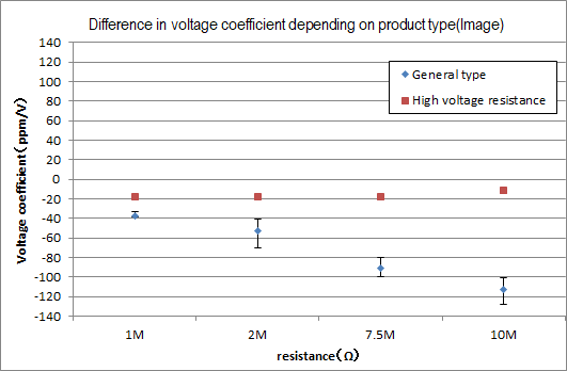General trimming method
Voltage coefficient
Normally in resistance measurement, the resistance is measured with a very small current (= low voltage) in order to avoid resistance change due to self-heating, but when the applied voltage is changed, the resistance also changes even without the effect of TCR. The rate of change is called the voltage coefficient (ppm / V).
Generally, high-voltage resistors tend to have a better voltage coefficient than general resistors. When the potential difference across the resistor is large, consideration should be given to the voltage coefficient.

Creepage distance
In order to ensure insulation between circuits in electronic circuit boards, the regulations for creepage distances of conductors and insulators are set by IEC60664-1 and UL840. Since required creepage distances specified in above standards differ depending on applications, attention must be paid to secure the proper creepage distance for each application.